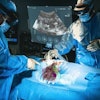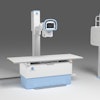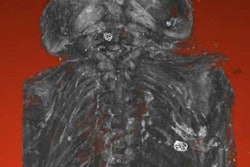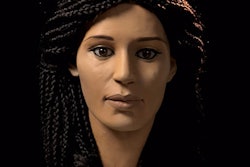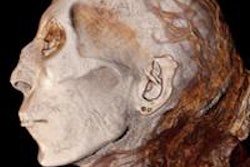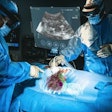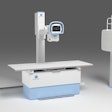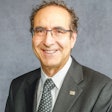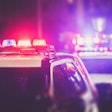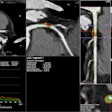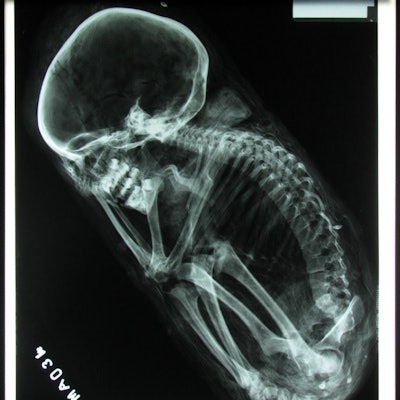
As a radiologic sciences instructor, most of my professional time is spent teaching radiology to future technologists. So it seemed almost unreal to me when I found myself in the mountains of Peru last month, performing x-rays on mummies and skeletal remains in an effort to preserve a culture that flourished hundreds of years ago.
How did I get to this place? In Illinois, I'm a radiology instructor for Southwestern Illinois College, as well as a team member of a couple of rescue groups that do search and recovery. I had been researching mummies for about nine months for a presentation I was giving at a radiology state conference. I ran across some information that I wanted to include, so I contacted the authors and asked permission to use some of their pictures and information.
That started an almost yearlong conversation between me and Jim Skufis, a radiology program coordinator at Washtenaw Community College in Michigan, who has been going to Peru for many years as part of an effort to preserve mummies of the Chachapoya culture in Leymebamba, Peru.
The Chachapoyas lived in the Andes Mountains at about the same time as the more well-known Inca civilization. The Chachapoyas were eventually conquered by the Incas, and along with the Incas were devastated by the arrival of the Spanish conquistadors. (The golden idol featured in the opening scenes of the movie "Raiders of the Lost Ark" was supposedly inspired by the Chachapoyas.)
Fortunately, Chachapoya culture lives on through the numerous archaeological sites that are sprinkled throughout the northern Andes and which feature dozens of mummified remains interred as part of burial rituals. Many of these were only recently discovered, leading to a major effort organized by Peru's Centro Mallqui organization to record and catalog the remains before they can deteriorate or are affected by rising levels of tourism.
When Jim asked if I would be interested in accompanying his group on the next trip to Peru, I didn't hesitate to say yes. With my background in radiology and pathology and my interest in forensic radiology, it was a perfect skills match.
Accompanying Jim and I were three graduate radiologic sciences students: Mario, Heather, and Claire, all planning further studies in modalities such as CT and MRI and all interested in forensic radiology. Our plan was to meet up with two bioarcheologists from Canada when we arrived in Lima.
We set out for the Chachapoya region after landing in Lima, spending a day visiting Inca ruins at Machu Picchu along the way. Next we flew on a plane to Cajamarca in the northern Andes, where we would spend the night. After that it was an eight-hour van ride to our final site, Leymebamba. We spent the day winding in and out of mountains, reaching heights of 14,500 ft above sea level.
Once we arrived and settled in at Centro Mallqui's museum and research center, we began to plan out our duties and workflow. There to greet us was Sonia Guillen, PhD, the mastermind behind the conservation of Peruvian mummies. We would be joined by Joel, an anthropologist in Peru; Rosa, a textile specialist who works for Guillen; and Carolina from Brazil, who was studying under Rosa.
Preserve and study
Our work was simple: Preserve and study the Chachapoya mummies and skeletal remains. This would be accomplished by taking detailed photographs of each specimen, along with any loose individual skeletal remains found. Once that was done, we were to take detailed x-rays of each mummy or set of remains.
Documenting the remains was another major task for the group; we were supposed to record anything unique or unusual, such as signs of trauma, pathology, deformities, age, gender, measurements, burial site location, overall condition, date, etc. Once all of the information and images were obtained for a specimen, we were to create an electronic file case where everything would go.
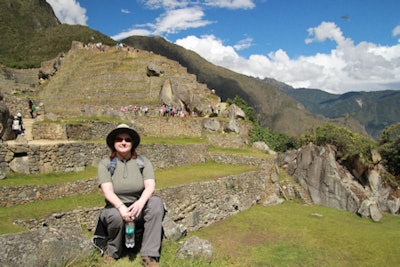
Jim spent most of his time taking detailed photographs of every specimen, as Joel, Rosa, and Carolina unwrapped and cleaned specimen bundles. Jim often spent eight hours a day taking photos of just one or two full specimens. Photographing mummies takes time, focus, a steady hand, and a good eye; Jim was in the trenches, and he served the Chachapoyas well!
After that, the specimen would come to our makeshift x-ray room. Being out in the field and in the middle of nowhere, an old single-phase film machine was the best choice. Hand dipping and developing the x-rays seems primitive, but for the work we do it leads to the best detail. A total of 222 specimens were x-rayed.
We didn't have access to digital imaging, so we had to get creative to convert analog x-ray images into a digital format. Once the x-rays were processed, I would hang the dried x-ray film on a lightbox, turn off the lights in the room, and take a close-range photo of the x-rays to get them in a digital format. We found this to be the best method.
I took 3,800 photos of x-rays alone. This was very time-consuming, but it was a great contribution to the process of creating an electronic database for each specimen, something that had never been done. Now, all of the detailed photos, the x-rays, and the information for specific specimens can be viewed with the click of a button by anyone with internet access.
Along with the human mummified remains, we performed x-rays of pottery and mummified animals. Whatever was found at the burial site was x-rayed along with the human mummies. By x-raying the pottery, we can tell how it was made and of what materials. This can help date the artifacts and shed light on other cultural influences the Chachapoya may have had. X-rays of the mummified animals also shed light on the Chachapoya culture and religious practices.
On the days we weren't working on imaging, we would go on hikes to burial sites. Many ruins were hard to reach, taking six hours or more get there on foot, but we saw places seldom visited by tourists and that changed us forever.
By the time we returned in July, we had spent 28 days in Peru. That seems like a long time, but once you set foot on the mountains of Peru, you blink and it's over. We accomplished an unheard of amount of work while we were there -- a testament to the skills and focus of everyone involved. We were all working toward the same goal, each of us holding a piece of the puzzle. Collaborating with so many disciplines and people with such varied skills added depth to the work at hand.
Leaving Peru was bittersweet. I believe we served the Chachapoya culture well and furthered the work of many anthropologists and archeologists. Creating a digital file system for each case will create opportunities for years to come for other researchers to share and collaborate.
I met fascinating people along the way, some of whom I will remain friends with for life.
So how does a radiologic technologist from Illinois end up in Peru x-raying mummies? Just be open and ready for the opportunities that come your way. Technologists everywhere should know what our impact can be -- worldwide as well as on the future of healthcare -- by helping to unwrap the past!
Peru was never on my radar before this, but now it has become one of my most memorable experiences.

